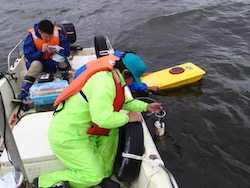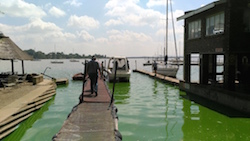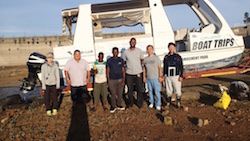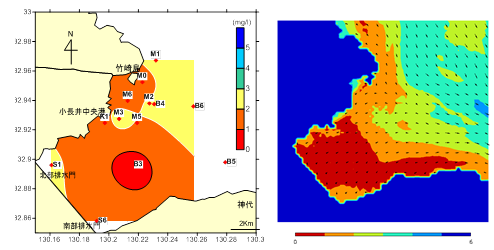Environmental Fluid Dynamics Division
Member
YAJIMA Hiroshi
KIM Sangyeob
Brock Adam Hedges
About
This division focuses on the hydrodynamics in various water bodies to understand water environment for not only physical aspects but also on biological and chemical aspects. The primary research objective of this division are brackish water regions where fresh and saline water are mixed, eventually resulting in complex environments. This division also conducts research on rivers and coastal zones, which are important to understand brackish water environments. Furthermore, this division specializes in a dam reservoir water issues like algal bloom, turbidity, and water temperature problems.
The research methods within this division are conducted in two steps. Initially, field observation is conducted to measure flow and water quality data using current meters, multiparameter water quality sensors, etc. In the second stage, 1- and 3-dimensional coupled hydrodynamic-aquatic ecosystem models are used to simulate water temperature, dissolved oxygen, nutrients, and phytoplankton, to understand water environments along with the field data. As such, this division can evaluate the water environments in lakes, reservoirs, estuaries and coastal oceans. If necessary, this division also considers an appropriate method to restore deteriorated water bodies due to human activities. Moreover, this division evaluates the global warming effects on the water environments and their adaptation.





